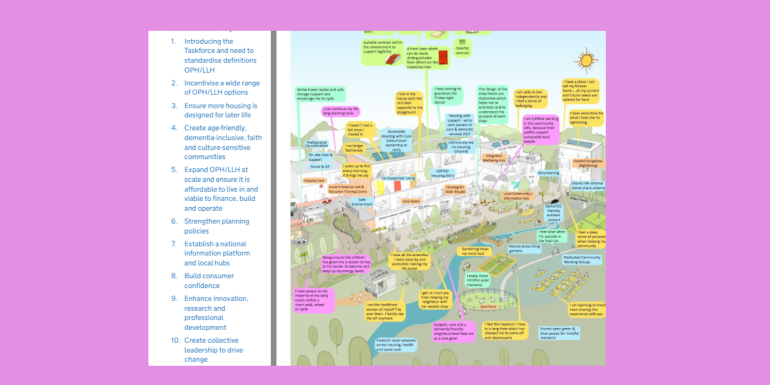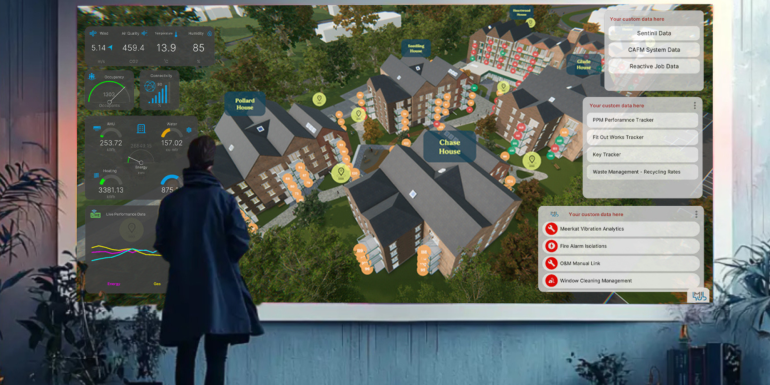Pozzoni has been designing a new, vibrant, and diverse neighbourhood in North Manchester. Led by Manchester University NHS Foundation Trust, Manchester City Council, and the Greater Manchester Integrated Care Partnership, this project also involves Bruntwood through a Strategic Property Partnership.
The ‘Healthy Neighbourhood’ adjacent to the North Manchester General Hospital will provide a new intergenerational community promoting social inclusion and healthy ageing. The 600-home scheme, integrated within a health and social care environment, incorporates family housing, later living, extra care, dementia care, key worker, and supported housing, and is based on Pozzoni’s intergenerational living concept and research with the Greater Manchester Ageing Hub. This project embraces and encourages a range of housing solutions for all ages, whilst easing the housing crisis.
Intergenerational living demonstrates the social value this type of development can bring to local communities by promoting interaction and understanding between different age groups, reducing social isolation and loneliness. Encouraging mutual caregiving, where older adults can assist younger generations to foster a sense of community and shared responsibility – this has been widely evidenced at our award winning Belong, Chester scheme where we have integrated a nursery into the care home design; the first of its kind in the UK.
The lifestyle benefits of age diverse communities across the country are tangible and proven. Since Belong Chester opened its doors 18-months ago, over 80% of residents have reported that intergenerational interactions are changing their lives for the better, and the scheme successfully demonstrates learnings for anyone looking to replicate these advantages.
Is it that simple?
There are many challenges that come with designing and delivering intergenerational living schemes; finding appropriate located sites, funding arrangements, local plans failing to have a specific older persons housing strategies to name a few.
It remains important that key policy makers take on board the recommendations of the Older Person’s Housing Taskforce report to set up information hubs, to gain acceptance and support from the local community, to breakdown stigmas, ageism and misconceptions about intergenerational living, whilst also highlighting the options available for age friendly housing to those wishing to access it.
Policymakers and built environment professionals must adopt a forward-thinking approach that prioritises the needs of older adults. By embracing intergenerational living, we can enhance social value, reduce isolation, and improve the quality of life for all residents. This innovative model not only strengthens family bonds and community ties but also ensures that our communities remain resilient and inclusive for generations to come.
By working together, we can create a brighter, more connected future where people of all ages can thrive.
Article authored by:
Ian Mellor, Associate Director specialising in later living and Integrated Retirement Communities at Pozzoni Architecture.





